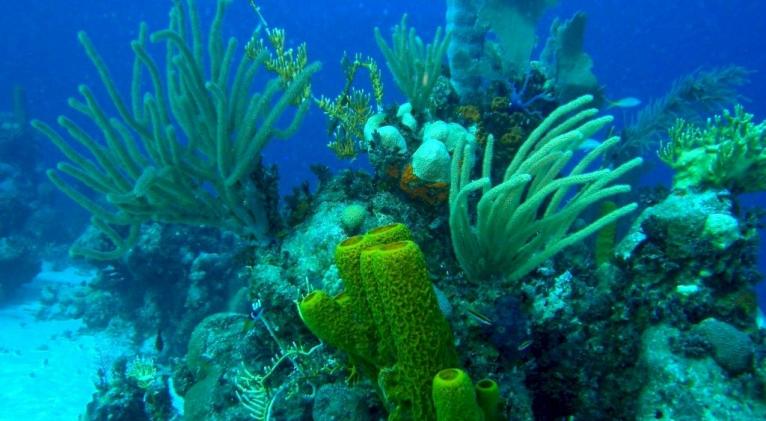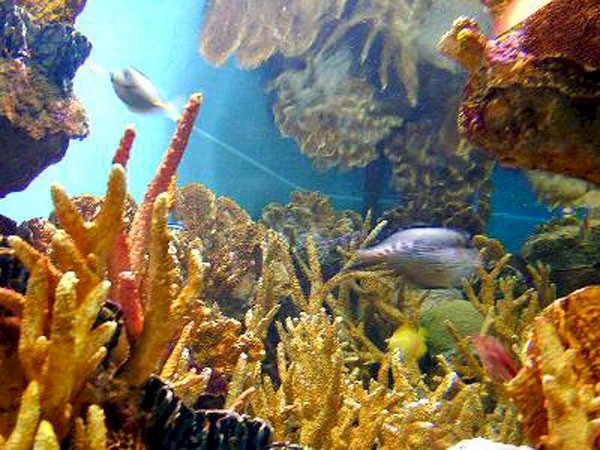Cuba’s ecosystems: From the mountains to the sea
especiales

The sacred books of the Maya say that the gods made human beings of corn, asserting, in essence, that people are shaped by their natural environment.
Time has shown this to be a valid principle. Living things and their environment are so closely tied that the concept of ecological systems has emerged, with different conditions leading to the development of different life forms.
Cuba is a splendid tropical archipelago, with a variety of ecosystems ranging from the seabed to mountain summits. The islands natural extremes have impacted the nation’s history and left their mark culturally.
The island’s natural diversity is first apparent upon arriving by sea, and continues to offer surprises as one travel toward ancient and modern interior cities, through savannahs and mountains. This diversity thrives in the subsoil, runs through jungles, while the country’s islets and cays are of infinite interest to the curious, tourists, geographers, speleologists, geologists, biologists…
The waters which surround Cuba are prodigious, immortalized, along with their swordfish, by Ernest Hemingway in his sagas. Its beaches of fine sand and bright sun are legendary.

Cuba’s reefs are colored with every conceivable hue
UNDER THE WATER
Those who venture below the surface of coastal waters in search of hidden marvels discover a universe of coral reef life in perpetual motion, in both shallow and deep areas of the island’s shelf. Thriving here as buried treasure are communities centered around giant calcified corals, or reefs of several variants including bars and promontories, in perfect symbiosis with fish, seaweed, sponges, anemones, tunicates, mollusks and crustaceans. A kingdom of color located along the country’s 3,200 kilometer perimeter.
Who is not amazed by the beauty of a coral reef, where nature appears to have used every color on her palette? Coral polyps have created this fantastic world which serves very important ecological purposes, such as defending the coastline from hurricane damage; providing habitat for an enormous number of marine species; and producing the fine sand for which Cuba’s beaches are famous.
Cuba’s principal island is ringed by more than 4,000 cays and islets which boast their own unique ecosystems. Many are pristine and uninhabited, while others have been developed for tourism, making an important contribution to the nation’s economy. Among the archipelagos most visited are the Canarreos, Jardines de la Reina, the Colorados and Jardines del Rey.
Beaches, mangroves and wetlands have created a border between sea and land. These ecosystems are inhabited by a great variety of birds, and feature several species of mangroves, shoreline lagoons, estuaries, fresh water springs and swamp woodlands.

A fantastic rocky world
The largest of these wetland ecosystems – the most expansive in all of the Caribbean – is the Ciénaga de Zapata, designated a UNESCO World Heritage Site. Also unique are the Lanier wetlands on the Isle of Youth, and the Cauto River Delta’s Birama.
The Ciénaga de Zapata is home to Crocodylus rhombifer,an endemic Cubancrocodile, and two bird species with very reduced habitats: a rail known as the gallinuela de Santo Tomás (Cyanolimnas cerverai) and the wren Ferminia cerverai.
As a result of the island’s karst topography, a large number of caves can be found in mountainous regions, and in some flat areas, making Cuba a paradise for speleologists. The western province of Pinar del Río, in particular, has an extensive cave system. A large gallery in its central mountains contains some of the world’s tallest stalagmites, and Caguanes National Park, located on the province’s central plains, is well-known for the length of its caves.
MOUNTAINS & PLAINS
The language used to describe nature’s work in the interior of the island is much more straight-forward. Found on most of the main island’s terra firma are two well-defined ecosystems: mountains and plains.
The plains are more extensive, and have historically undergone the most changes at the hands of human beings, basically for agricultural and livestock farming purposes.
Cuba’s plains are, however, not all the same geologically. There are two distinctive types found along the coastline before reaching the mountains: limestone flatlands and marine terraces. Examples of the first are the Guanahacabibes Peninsula and the Isle of Youth’s southern plains.
Marine terraces are striking elements of Cuba’s topography, and among the best-preserved in the world, reaching their largest proportions in Maisí (Cuba’s easternmost point) and Cabo Cruz, on the western slope of the Sierra Maestra.
These formations have as many as 24 steps, with a steep elevation gain of 80 to 100 meters.
It is believed that the original Arawac inhabitants of the island, locally known as Tainos, arrived in the area of Maisí, and moved west toward the area populated by the Siboney. There are enough archaeological sites remaining on the weather-beaten terraces to support the hypothesis that this was precisely where many of the island’s indigenous people landed, long before the Spanish conquistadores.
From Maisí, along the northern coast, lie the terraces labeled the Nipe-Sagua-Baracoa group, home to virgin woodlands, clear rivers and some of the greatest biodiversity in the Caribbean. The Cuchillas del Toa Biosphere Preserve and Alejandro de Humboldt National Park are located here.
The Sierra Maestra are the mountains running perpendicular to the southern coastline of Cuba’s eastern provinces. Located here are Desembarco del Granma and Turquino National Parks. The guerrilla struggle led by Comandante en Jefe Fidel Castro, which defeated the U.S. supported Fulgencio Batista dictatorship, took place for the most part within these steep mountains and woodlands.
Farther west, in the center of the island, are the Guamuhaya or Escambray mountains, the most affected by human activity among the island’s four important ranges.
Lastly, in the far west is the Guaniguanico range, with its singular mogotes, isolated hillocks which rise above the flat floor of the Viñales Valley, where the Sierra del Rosario Biosphere preserve is located.
The last element of Cuban ecosystems which must be mentioned is undoubtedly the nation’s people, committed to preserving the country’s natural, historical and cultural heritage.













Add new comment